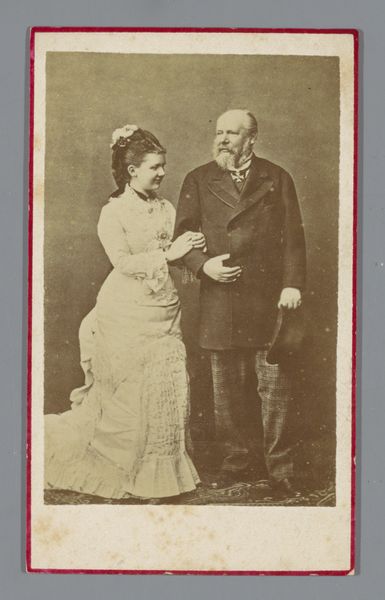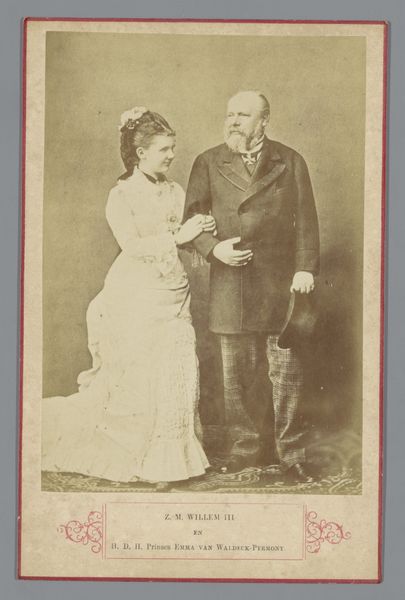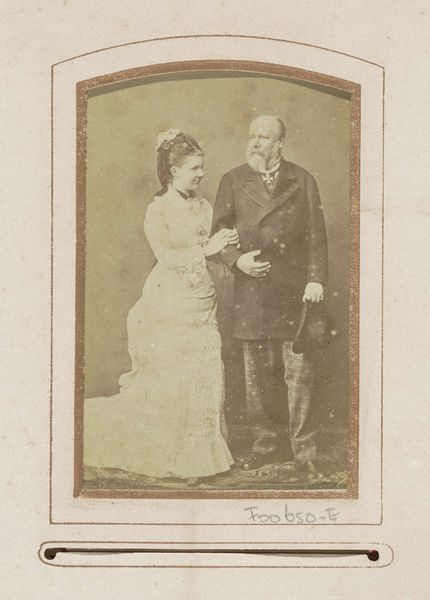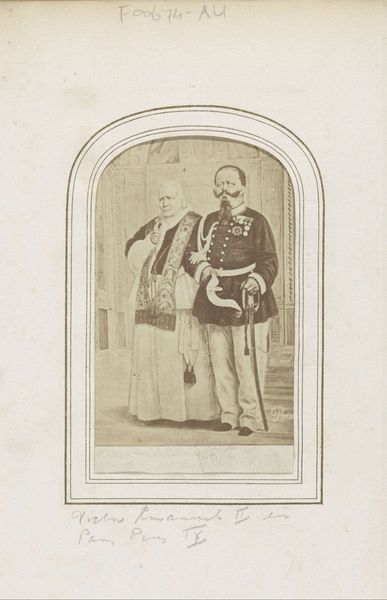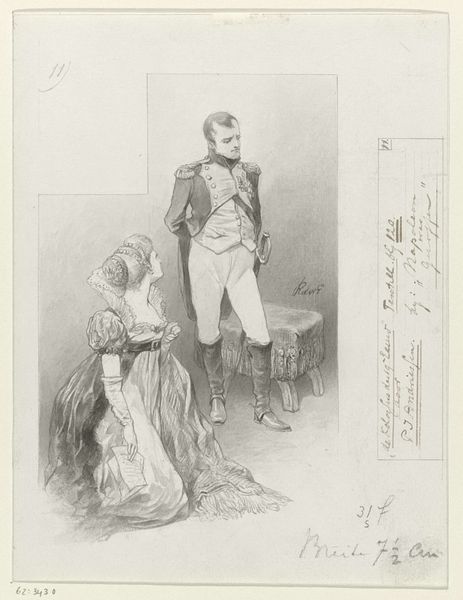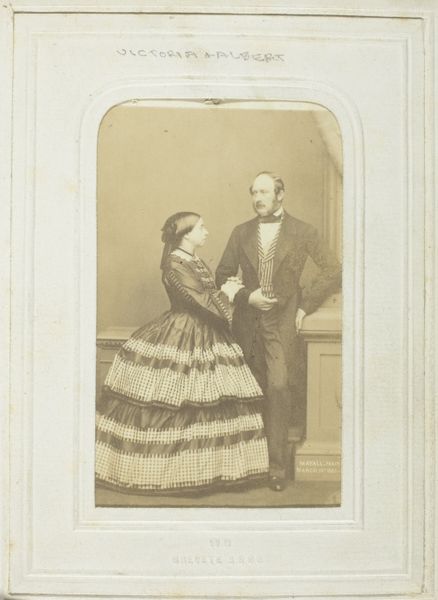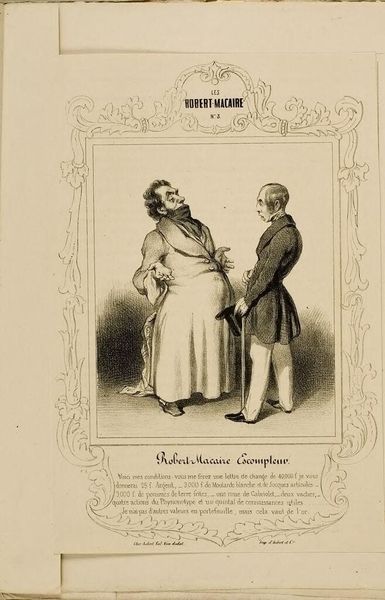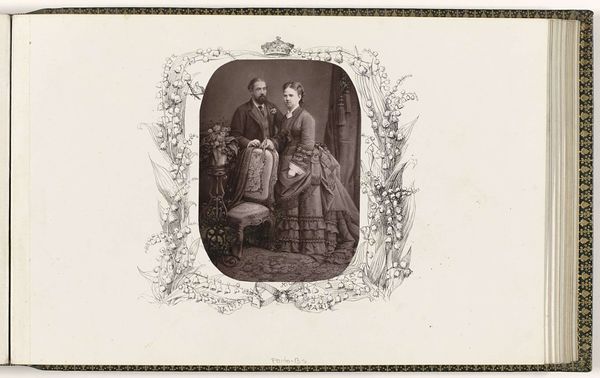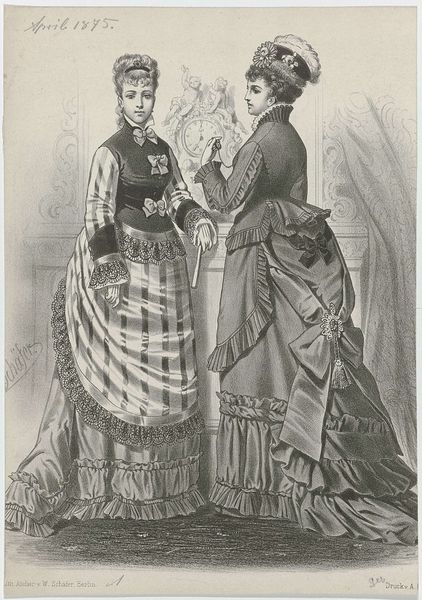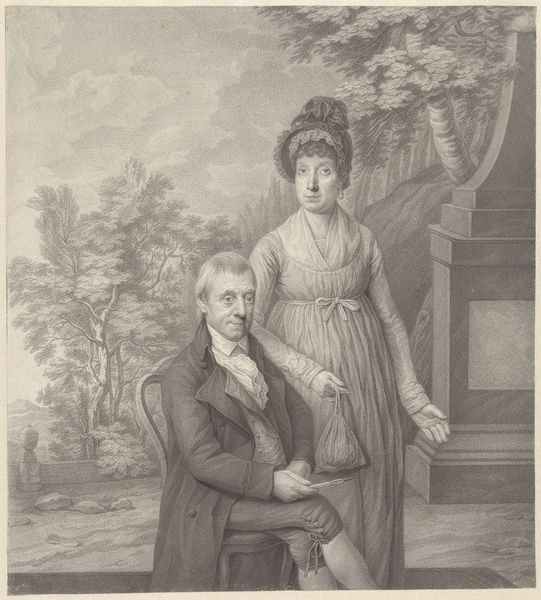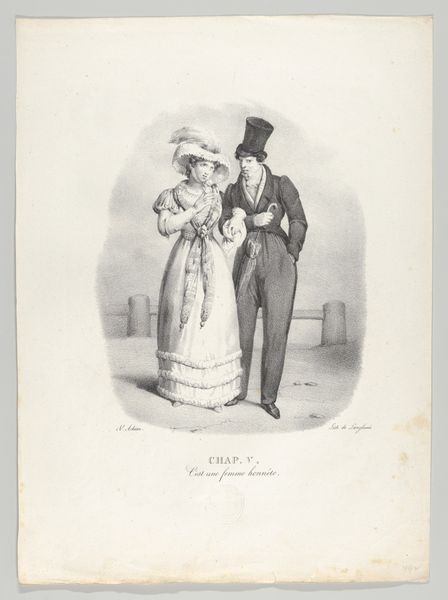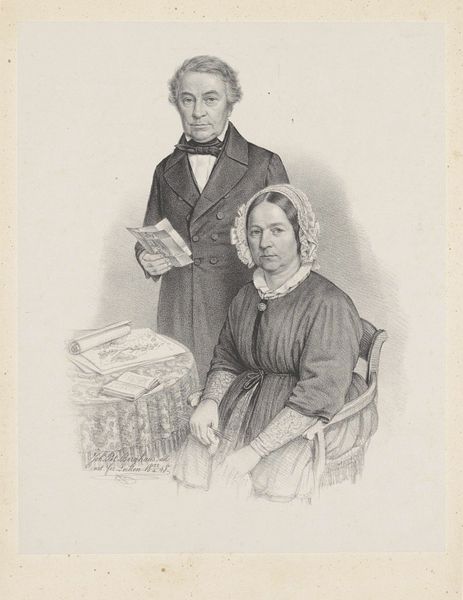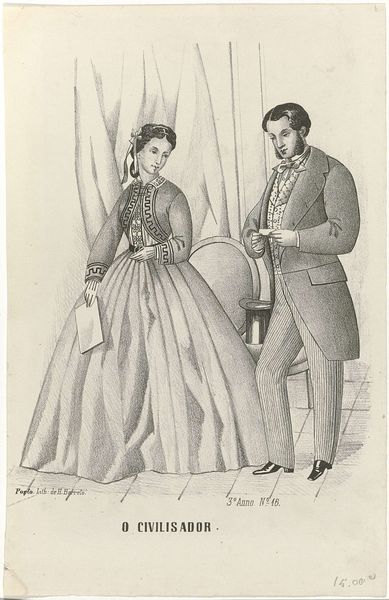
Portret van Willem III, koning der Nederlanden, en Emma, koningin-regentes der Nederlanden 1878 - 1888
0:00
0:00
photography
#
photography
#
19th century
#
history-painting
#
realism
Dimensions: height 256 mm, width 181 mm
Copyright: Rijks Museum: Open Domain
Editor: Here we have "Portret van Willem III, koning der Nederlanden, en Emma, koningin-regentes der Nederlanden," created between 1878 and 1888, using photography. It's interesting to see such formality captured in this medium, and the composition feels very deliberate. How would you interpret the arrangement of the figures and the tonal range of the photograph? Curator: The composition relies on a structured balance between the figures and the backdrop, directing attention toward the subjects’ clothing, pose, and proximity. Willem III, presented on the right, holds a hat. Consider the way light renders the textures of the fabric and the contrast in tones, creating both depth and emphasis, structuring meaning in this tableau. What do these features convey? Editor: I notice the details, like the Queen's gown, seem to almost merge with the backdrop, in contrast to the King's darker suit which pops in the scene. It looks like realism... almost theatrical? Is it accurate to describe it that way? Curator: Realism emphasizes direct observation and detail. This is conveyed through tone and gradations of the details rendered via the camera. Realism often reveals aspects about a setting. Examine how details in the backdrop, their garments, their poses work together. What kind of statement might the original artists have sought to present using these tools? Editor: That’s helpful – thinking about how visual language creates meaning, how their choice of style, tones, and how those elements help communicate power and authority, definitely makes a huge difference in how you view this portrait. Curator: Indeed, focusing on the materiality and structure allows a more comprehensive analysis, understanding the composition as an intricate articulation of visual intent, rather than a simple recording.
Comments
No comments
Be the first to comment and join the conversation on the ultimate creative platform.
